Basics on Flat Roof Insulation
by Mark Row
The importance of flat roof insulation
Flat roof insulation is yet another way to properly protect your home from unwanted external and internal effects and provide your home preferable thermal and acoustic comfort. First of all, bear in mind the difference between flat and pitched roofs, just as the difference between some subcategories and classifications within these roof types, which will also determine the type of insulation you need. We herewith offer some flat roof insulation basics that will show you the importance of proper insulation and help you make the right decision.
Flat roofs: Definition and Classification
Let’s start from the top, by defining and determining the very definition of a flat roof. Namely, a flat roof is a building covering which is set horizontally with very low pitch, which is the basic difference when compared to pitched roofs. Flat roofs are usually covered with some type of waterproof material, being the membrane of the roof, allowing the water to run off into a gutter system which directs it to the ground or to a built drainage system. Flat roofs are usually made out of concrete, as a cheaper way to provide adequate protection form the heat, especially in warmer climes, where freezing is not expected during colder time of the year or flat roofs can have a timber structure which is much more appropriate and useful in colder climes where there is a potential danger of water freeze which can lead to breaking up of concrete structure due to ice expansion. Concrete flat roofs are usually reinforced with some insulation material, such as extruded or expanded polystyrene board, mineral or glass fiber batts, phenolic or urethane foam board, which are placed under the roof covering. Timber structure flat roofs on the other hand usually have mineral or glass fiber quilt placed between the joists.
 Another thing to know about flat roof insulation is the basic flat roof types. Flat roofs are generally classified as “cold” or “warm” roofs, depending on the thermal insulation position. Cold flat roofs structural components are not protected from the heat by a insulation layer which makes them susceptible to damaging caused by thermal movement, why they are not recommended now days, though commonly used. Thermal insulation in cold roofs is placed under the structural deck, between the joists. On the other hand, in warm flat roofs insulation is laid above the structural deck, which maintains the temperature of the deck at the inner temperature level, thus protecting it from any extreme cold or hot influences and making it less subject to thermal movement.
Another thing to know about flat roof insulation is the basic flat roof types. Flat roofs are generally classified as “cold” or “warm” roofs, depending on the thermal insulation position. Cold flat roofs structural components are not protected from the heat by a insulation layer which makes them susceptible to damaging caused by thermal movement, why they are not recommended now days, though commonly used. Thermal insulation in cold roofs is placed under the structural deck, between the joists. On the other hand, in warm flat roofs insulation is laid above the structural deck, which maintains the temperature of the deck at the inner temperature level, thus protecting it from any extreme cold or hot influences and making it less subject to thermal movement.
NOTE: There are also two basic types of warm roofs – sandwich, where insulation is positioned under the waterproof covering and inverted, where insulation is placed over the waterproof covering and structural deck.
Flat roof insulation: Methods and Materials
There are also some things to consider and take care of before installing flat roof insulation. The first thing is flat roof ventilation. Simply put, proper ventilation enables hot air and accumulated moisture to escape, which is very important since moisture, gathered around joists will in time effect insulation performance. Since flat roofs don’t have any eaves, proper ventilation could be provided through exterior wall side vents or roof vents. Another important thing are vapor barriers as protective layers which prevent any remained moisture to cause the drop ceiling or drywall to rot, placed between the ceiling panels and joist and insulation. Finally, another thing to take into account in flat roof insulation is sealing any bypass, which appear as any crack or hole in the insulation, such as the space around lighting fixtures. These bypasses can cause warm air leakage, let cold air in or create moisture air pockets, so it is important to properly seal them.
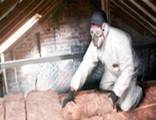
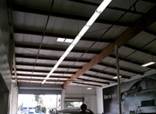 There are some basic methods applied in flat roof insulation. Namely, the insulation can be installed within the structure zone, with or without ventilation, usually between the existing roof joists, which could be a good solution, since this way you maintain the existing structure and its thickness. However, this method of insulation usually involves the removal of roof decking and covering, so it is best done whenever you decide to renewal your roof covering. Another method of insulating a flat roof is insulation above the roof structure, done by applying warm or inverted deck system. Warm deck system is based on the use of resistant insulation boards, since another deck is raised between the already existing one. This can be done by using rigid insulation and directly installing a new roof covering or by raising another timber structure above the existing one. Inverted deck system, as a variation of the previously explained warm deck system, involves placing the insulation above waterproofing layer. Finally, another way to insulate your flat roof is by applying insulation beneath the structure, which will depend on room heights, by simply adding another ceiling below the existing one, using shallow joists.
There are some basic methods applied in flat roof insulation. Namely, the insulation can be installed within the structure zone, with or without ventilation, usually between the existing roof joists, which could be a good solution, since this way you maintain the existing structure and its thickness. However, this method of insulation usually involves the removal of roof decking and covering, so it is best done whenever you decide to renewal your roof covering. Another method of insulating a flat roof is insulation above the roof structure, done by applying warm or inverted deck system. Warm deck system is based on the use of resistant insulation boards, since another deck is raised between the already existing one. This can be done by using rigid insulation and directly installing a new roof covering or by raising another timber structure above the existing one. Inverted deck system, as a variation of the previously explained warm deck system, involves placing the insulation above waterproofing layer. Finally, another way to insulate your flat roof is by applying insulation beneath the structure, which will depend on room heights, by simply adding another ceiling below the existing one, using shallow joists.
When it comes to insulating materials that can be used in flat roof insulation, there are various options, from loose-fill materials, fiber rolls, semi-rigid insulation batts to rigid insulation boards and glass and mineral fiber insulation. For external flat roof insulation you can choose foamed glass or extruded polystyrene boards, while mineral fiber or polyurethane plaster boards can be a good solution for additional internal flat roof insulation. All the high quality products, especially designed to keep your flat roof protected from the heat, cold, moisture and other negative effects, made from leading manufacturing brands of insulating products, like Celotex, Kingspan, Rockwool, Knauf, Cellesta and Xtratherm, are available right here, at Insulation London.
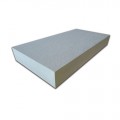
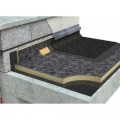
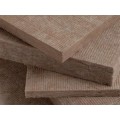
Cellotex Flat Roof Board Xtratherm Flat Roof Insulation Board Knauf Universal Insulation Slab
If you found this article to be helpful, please share it with your friends on Twitter, Facebook and Google+. If you have any questions or comments feel free to write them in the comment section below, I will respond to all of them.

















































































































